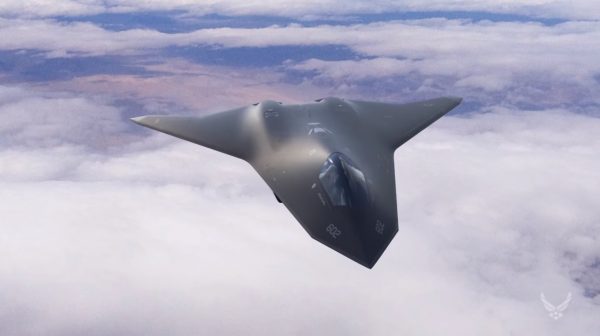TECH
 Hybrid theory: Lockheed Martin, Boeing pitch upgraded F-22, F-15
Hybrid theory: Lockheed Martin, Boeing pitch upgraded F-22, F-15Almost since the day the last F-22 Raptor fighter jet rolled out of Lockheed Martin's assembly plant, the US Air Force has been making plans for its successor—a "sixth generation" fighter aircraft to continue the US military's dominance of the air.
In 2016, the Air Force issued its "Air Superiority 2030" strategic plan for the next 15 years of air combat capabilities, which included a call for developing a "Penetrating Counter-air (PCA)" aircraft. Essentially, the military wanted a fighter capable of surviving in an advanced, hostile environment while taking out enemy aircraft and air defenses and acting as "a node in the network, providing data from its penetrating sensors to enable employment using either stand-off or stand-in weapons." The US Navy is looking at similar capabilities for its carrier-based air operations.
The F-35 Lightning II is not an air superiority fighter aircraft. While it can dabble in that role, it was intended to be a "strike fighter"—a fighter-bomber workhorse meant largely to take on ground targets and defend itself as necessary. The F-22 was built for such a life, but only 187 operational F-22s were delivered before that program was shut down in 2011. Since, advances in foreign aircraft, air defenses, and detection technology (including infrared systems and, potentially, "quantum radar" being developed by China) may have begun to put a dent in the F-22's superiority.
Designs for a successor aircraft to the F-22 are still highly conceptual at this stage, and it could be a decade or more before a contract is even awarded to build the next-generation fighter aircraft. That's got the two major fighter aircraft manufacturers—Lockheed Martin and Boeing—feeling a little itchy. Both have been pitching interim plans to the Air Force that wouldn't require a long lead development cycle while helping to beef up the Air Force's air superiority capability much sooner. The Air Force, however, has not yet been hooked on either option.
Back in August of this year, Defense One reported that Lockheed Martin was working on a proposal to update the existing F-22 design with the new technologies developed for the F-35 Lightning II Joint Strike Fighter program. This hybrid aircraft is essentially what Lockheed Martin has pitched to Japan as a replacement for the Japanese Air Self-Defense Force's aging F-2 fighters—domestically produced fighters based on the F-16 design, slotted to retire by 2030. The US has put tight controls on F-22 technology in the past, but the Trump administration may allow the deal with Japan to go forward in the interest of fixing trade déficits.
Boeing's pitch is an upgrade of a different color, based on the same game plan that convinced the Trump administration and the Navy to buy more FA-18 Super Hornets. The F-15X, revealed by The War Drive in July, is a proposed upgraded version of the venerable F-15 Eagle. The F-15X is also a fighter on a budget, but its design is focused on flipping the "high-low" mix originally behind the F-22 and F-35 combination.
With dramatically newer avionics, enhanced RADAR, and a lot more firepower, the F-15X would carry up to 24 air missiles. The aircraft could also get enhanced electronic warfare capabilities, which it would need since it lacks the low observable design of the more stealthy F-35 and F-22. But the F-15X would integrate into the current supply and support chain readily, and it could fulfill roles not requiring the stealthiness of the F-35.
Air Force Secretary Heather Wilson has been adamant that the Air Force will focus on the F-35 program for now and that there are no plans to follow through on either proposal at the moment. But there is apparently support for both ideas within the Air Force, where senior officers have reportedly been shepherding the initiatives at a low level. Given that shifting priorities are the only constant at the Pentagon, it's still possible that one or both of these low-budget (in DOD dollars) upgrades will happen.
Sean Gallagher/mundophone

No comments:
Post a Comment